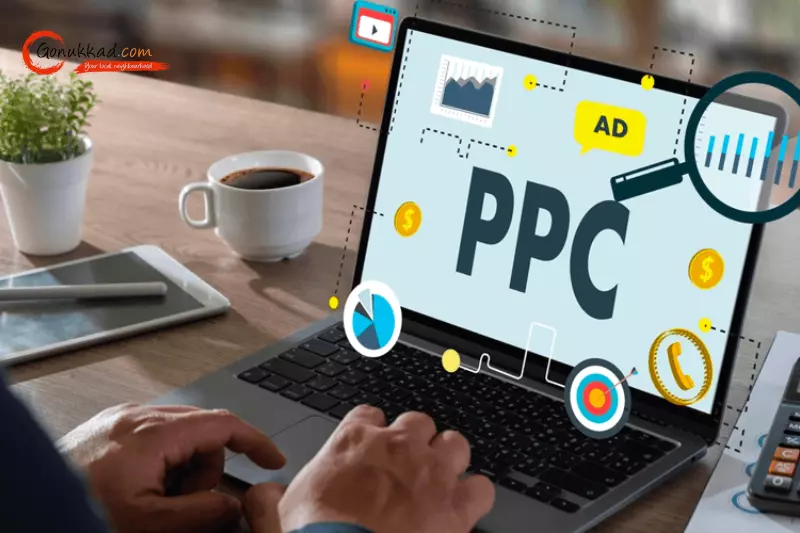22 December, 2023

Last updated on 22 December, 2023
Written by Content Team
PPC For Ecommerce: Top 10 Strategies To Boost Your Sales
Explore proven PPC for ecommerce strategies to elevate your ecommerce sales. Discover the tactics that can transform your business.
Ecommerce is a competitive, constantly evolving marketplace where Pay-Per-Click (PPC) advertising is a game-changer for businesses. It requires innovative strategies to cut through the digital noise and maximize Return on Investment (ROI).
Explore ten proven PPC strategies, from cross-platform advertising to remarketing campaigns, designed to elevate your ecommerce sales and make your ecommerce PPC services thrive in the competitive digital landscape.
Here are the top strategies for using PPC for ecommerce:
While Google Ads takes the spotlight, diversification is the key. Expand your horizons to platforms like Facebook and beyond. The multi-channel approach ensures your brand resonates across various touchpoints, capturing diverse audiences within your target market.
Remarketing is the unsung hero of PPC. Target users who previously engaged with your website, showcasing tailored ads that increase the likelihood of conversion. With a 70% higher chance of purchase, remarketing is a must-have in your PPC arsenal.
Enhance your ad's visibility and engagement by incorporating various ad extensions. Use extensions strategically, from message extensions facilitating direct communication to call extensions for seamless contact. This enriches your ad, offering users a comprehensive snapshot of your offerings.
Mobile-friendly landing pages become crucial, with over half of global internet traffic originating from mobile devices. Optimizing your landing pages for mobile users is vital, as more than 50% of ad clicks happen on mobile phones.
A high-quality landing page in the context of PPC should be fast, functional, and intuitive to accommodate short attention spans, have seamless functionality across devices, and be user-friendly.
Explore the potential of lookalike audiences on Facebook and similar audiences on Google Ads. While these features exist on different platforms, they share the goal of helping your business connect with users who resemble your existing followers, customers, or website visitors.
Facebook and Google Ads simplify the audience creation process, requiring minimal input from your team. Companies implementing lookalike audiences have witnessed remarkable success, with some achieving a fourfold increase in PPC ROI.
While you can set any budget on most ad platforms, achieving desirable results requires a realistic investment. Research the averages within your industry, such as the average cost-per-click (CPC) for ads. Understanding what other companies in your sector invest in PPC advertising provides valuable insights for building an accurate budget. Evaluating your budget in the context of industry averages ensures your PPC strategy aligns with realistic expectations.
Create ad copies that resonate with users, which:
Captivating ad copy is the heartbeat of successful PPC campaigns. Create messages that resonate with your audience, which
1. Highlight uniqueness
2. Emphasize relevant information
3. Incorporate powerful CTAs
4. Ensure alignment with landing pages
5. Focus on benefits
Your ad copy should inform and entice users to take the desired action.
The adoption of responsive search and display ads is a strategic imperative for PPC success. These adaptive ad formats, irrespective of the platform, empower businesses to adjust to user behavior and preferences dynamically. With versatile ad content with multiple headlines and descriptions, advertisers enhance engagement and responsiveness. This approach accommodates diverse audience segments and provides valuable insights through real-time performance data.
Launching your ads and leaving them without monitoring is not recommended for PPC. Regularly assessing ad performance, ideally weekly, and incorporating A/B testing are essential practices most PPC experts endorse.
A/B testing, also known as split testing, is a marketing strategy that involves comparing two versions (A and B) of a webpage, email, or ad to determine which performs better. By presenting each version to a similar audience and analyzing the resulting metrics, marketers can identify the most effective elements and optimize their campaigns for better performance.
In the world of ecommerce PPC, precision matters. Geo-targeting allows you to tailor your advertisements based on the user's location, making your campaigns hyper-relevant.
By implementing geo-targeting in your ecommerce PPC campaigns, you enhance the relevance of your ads, leading to increased engagement and, ultimately, improved sales.
Implementing these top 10 PPC strategies can significantly boost sales for your ecommerce business. From diversifying advertising platforms to optimizing landing pages and leveraging audience targeting features, a comprehensive approach to PPC is key. Tailor these strategies to align with your specific goals, target audience, and industry landscape. Ready to supercharge your ecommerce sales through PPC? Explore the benefits of GoNukkad, your partner in unlocking the full potential of online advertising.
Q. What is the ideal advertising budget for an ecommerce PPC campaign?
A. While the budget can vary, on average, SMBs invest between USD 9000 and USD 10,000 monthly on PPC for ecommerce.
Q. How can I optimize my ad copy for better performance?
A. Focus on uniqueness, emphasize relevant information, incorporate powerful CTAs, ensure alignment with landing pages, and highlight the benefits of your product or service.
Q. Why is mobile-friendliness crucial in PPC for ecommerce?
A. With over half of global internet traffic coming from mobile devices and more than 50% of ad clicks happening on mobile, optimizing for mobile ensures a broader reach and improved user experience.
Q. What are lookalikes and similar audiences, and how can they benefit my PPC strategy?
A. Lookalike audiences on Facebook and similar audiences on Google Ads allow your business to connect with users who resemble your existing audience. This enhances audience targeting and can lead to a significant increase in conversion rates.
Q. How often should I conduct A/B testing for my PPC ads?
A. Regularly monitor ad performance and conduct A/B testing every week. This ensures you gather sufficient data to make informed decisions about optimizing and improving your PPC strategy.
Amplify sales with our expert account management. Unleash your true potential now!
Call Us